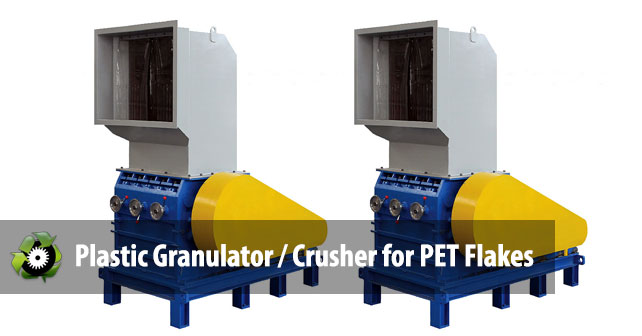
当我们想要去优化PET生产线时,第一道工序就是破碎机,一个好的破碎机,不仅可以让破碎出来的料更有质量,还可以让生产更有效率。
塑料破碎机是怎么工作的
一个塑料破碎机包括两组刀,一组是定刀,一组是动刀。当转子高速运转时,动刀和定刀接触到从而创造了剪切运动。
我们ASG的破碎机的设计是双剪切设计使剪切的效率更高。它是由10把动刀和4把定刀组成,可以提供更高效和持久对PET进行剪切。
在破碎腔体底部,有一个带很多孔的筛网。在我们的PET清洗线中,我们推荐95mm的孔径。PET瓶会持续的在破碎腔内被粉碎一直到PET瓶片足够小掉下来,一般在12-18mm左右。
破碎之后,物料被风机输送到片膜分离器里取出轻的物料(比如PP/PE薄膜和标签)。
破碎机维护
在这个段落,我们会介绍一些好的破碎机维护实践,起初可能会麻烦点,好的维护可以给你带来更高品质的PET瓶片和产量。
- 我们能给的最好的建议就是保持刀的锋利。尖锐的到可以提升产量,降低粉末料的量,提升产品品质。
- 要注意检查和维护定到和动刀之间的间隙。这个对于保持刀的锋利性起着重要的作用。
- 根据声音和成品的质量,经验丰富的操作人员可以知道是否破碎机需要维护。但是不要等着操作人员告诉你,制作一个定期维护的计划表。
- 一个高效的PET回收工厂会准备很多套磨好的刀,一旦需要换,可以及时换上。钝的到可以送去磨。
- 堵塞筛网意思是PET瓶片不掉下去,导致PET瓶片在破碎腔内堆积。这个会导致破碎腔内过热足够熔掉PET瓶片,从而导致进一步的堵塞。每次运行时检查下筛网,用金属刷或者钢丝刷。
- 这是一个一般的提示,确保有足够的备件比如刀,皮带,筛网等,这个会方便你的维修,减少停产时间。
- 下班时请维护设备
- 不要在破碎机里面有料的情况下关闭破碎机(除非紧急情况)。当有很多未被破碎的料在破碎腔体内时,再次开动破碎机可以会引起电气故障。所以在紧急情况下,开机前务必清理破碎机腔。
- 最后,一个适当的文书包括给成品标号是非常必要的。当问题出现时,这个是非常有用的。创建很多数字可以帮你跟踪成品怎么来的,谁生产的,日期,重量,PVC含量,还有用了哪些设备。
安全考量
对于所有的回收工厂,设备安全性是一个主要关心的问题。下面是一些安全贴士:
- 所有皮带机,破碎机,和清洗/干燥设备需要配备急停装置。
- 确保给所有的操作人员培训。
- 让破碎设备的噪音降到最小,用隔音壳体来确保噪音在法规限度之内。
- 确保有适当的通风设备和灰尘收集装置。
结论
尽管这个不是破碎机说明书,我们希望给你提供一些贴士和技巧来确保PET清洗工厂运转正常。这些特别对那些新的操作人员或者刚进入到这个行业的人很有帮助。
因为客户服务对ASG是非常重要的,我们希望我们的关系不会再你买我们设备后结束,相反,让我们一起努力来增加你的回收能力。


